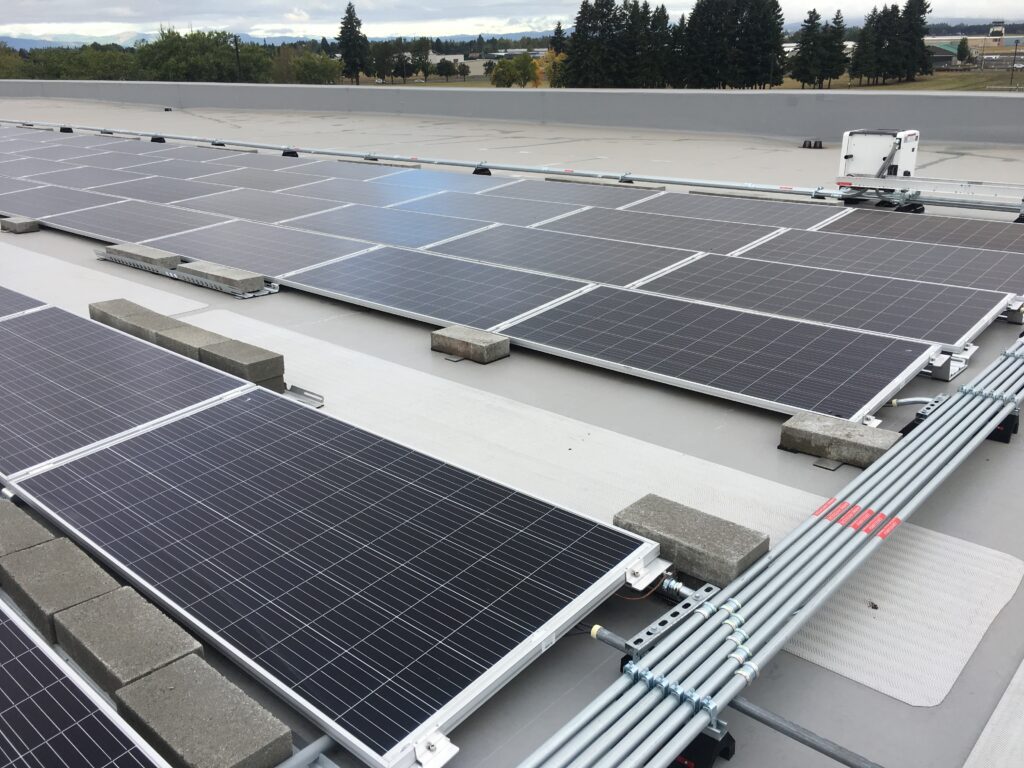Crosstalk in Module Level Power Electronics
Picture this. You’re an experienced solar PV installer and have been including module level power electronics (MLPE) as part of residential and small commercial systems for years. Today you’re commissioning a new rooftop project for the largest commercial client you’ve had to date, and you’re excited to make a good impression. It’s a bright sunny day, and the equipment looks properly installed–but when you turn it on, the monitoring shows no electricity being produced. Even after double and triple checking your connections, the problem is not apparent. Your client is tapping his watch. What do you do?

MLPE “crosstalk” is not the only issue that can appear on commissioning day, but it is a particularly subtle one. Systems suffering from crosstalk often will not even turn on. In some cases, crosstalk causes your MLPE devices to silently switch rapidly on and off, burning them out quickly, and creating potential hazards. Fixing crosstalk issues often involves changing wire runs, so addressing it after installation can be costly and time-consuming. Fortunately, with some forethought, it is easy to avoid this issue entirely.
To understand crosstalk, one must consider how MLPE sends and receives communication signals for rapid shutdown, and potentially for other functions. Signals must be exchanged between the MLPE and a central control device, often located within the inverter. While some MLPE products can communicate over WiFi, this does not always work on larger projects where the signal must be reliable over large distances.
If you’re worried that the limitations of WiFi can only be overcome by adding dedicated communication lines, fret not. A slick and powerful alternative called power line communication (PLC) sends data over the PV power conductors themselves. Many MLPE products take advantage of PLC, and it can make for a clean and less expensive installation.

Issues can arise when multiple energized circuits carrying a PLC signal are routed together through conduits, gutters, or cable trays. The signal from one PLC transmitter can be picked up on nearby conductors through electromagnetic induction, creating noise and disrupting communications. Have you ever been listening to a radio station in your car, and as you get into the countryside, a new station starts to play over the one you’re listening to? You were rocking out, but now Johnny Cash is singing Baritone over your Led Zeppelin. The same thing can happen with MLPE communication signals on wires lying directly beside each other! This is what crosstalk is; the solution is as simple as keeping your energized circuits separate.
How do you do this in practice? It will vary based on the specific MLPE and/or inverter used. Different products communicate differently, and it’s important always to read the manual of the equipment with which you’re working. Manufacturers may have detailed instructions on preventing PLC crosstalk, which should precede any general information we provide here. In this article, we’ll look at how Tigo optimizers use PLC and avoid crosstalk.

In one example, we have a small system with one string of modules plus Tigo optimizers feeding a single inverter. A Tigo PLC transmitter is placed near the inverter to modulate a signal on the PV circuit. This ensures rapid shutdown of the optimizers when a grid outage occurs. This “modulation” is a small (low-amplitude) digital communication signal placed on top of the dc voltage from the solar modules. Tigo RSD MLPEs only allow PV voltage onto the circuit when they can detect the signal from the PLC transmitter. When the grid goes down, the PLC signal ceases, and each optimizer will also cease PV production.

One Tigo PLC transmitter can add the communication signal onto a maximum of ten PV circuits. You’ll need to add another transmitter when you have more than ten PV strings or multiple inverters. Crosstalk is only disruptive when wires carrying signals from different transmitters lay near one another. That means that with Tigo optimizers you can have up to ten PV strings and a single transmitter without having any crosstalk issues. However, if your system uses multiple PLC transmitters, the circuits associated with each transmitter must be separated throughout their entire run. Tigo recommends a minimum distance of eight inches between wire runs when using their product, but this will vary for other manufacturers.

Some manufacturers may have ways to reduce even further the number of separate wire runs required in your system design. Tigo, for example, has an innovative feature called Pure Signal that allows up to ten transmitters to sync together. The communication between the transmitters maintains a consistent signal across all circuits. By daisy chaining the transmitters together, the PV output circuits from up to ten inverters can then be routed together without producing crosstalk issues. If your project has over ten inverters, you must separate any PV circuits carrying unsynced PLC signals.
Having separate runs for the PV circuits carrying different signals comes with the cost of additional conduit and labor, and takes more physical space. Although this added complexity is counterintuitive to many designers–and customers–it is crucial for the proper and safe functioning of MLPE systems that communicate using PLC. Take the time to think through crosstalk from the outset of your project, and you’ll thank yourself later.










